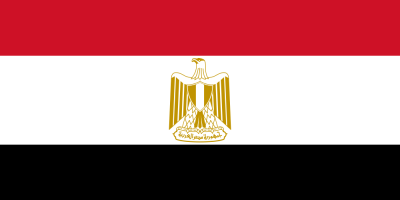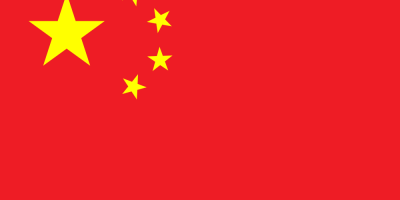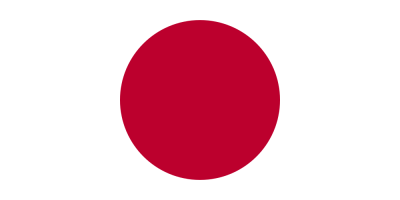Oman flag color codes features three horizontal bands of white, green, and red with a vertical dagger and two swords in the upper hoist corner. The symbolic meanings and colorful design make the Oman flag visually striking, but to properly display this flag on a website or in graphic design requires using the right Oman flag color codes. In this article, we will provide the essential Oman flag color codes including the HTML HEX, RGB, PANTONE, HSL, CMYK, HWB, and NCOL values that represent the exact red, green, white and black colors of the Oman flag. With this guide to the official Oman flag color codes, you’ll have all the information needed to accurately reproduce the colors of this Middle Eastern country’s national banner.
Table of Contents
What are the colors of Oman flag?
The colors of the Oman flag are:
- Red – Represents the battles fought by the Omanis. It symbolizes courage, sacrifice, and heroism.
- Green – Represents fertility, agriculture, and the lush plant life in Oman. It also symbolizes prosperity.
- White – Represents peace, honesty, neutrality, and purity.
- Black – Represents the defeat of the country’s enemies. It also symbolizes strength and resilience.
The three horizontal bands are red on the top, white in the middle, and green on the bottom. In the upper left corner there is a national emblem featuring two crossed swords over a dagger in black.
So in summary, the main colors are red, green, white and black. The red, green and white bands represent key elements of Oman, while the black emblem symbolizes important values and the nation’s history. Together they create a vivid flag that encapsulates Oman’s culture and heritage.
Oman flag color codes & Color Names:
WHITE
| Color Model | Value |
|---|---|
| HTML | #ffffff |
| HEX | #ffffff |
| RGB | 255, 255, 255 |
| PANTONE | N/A |
| HSL | 0°, 0%, 100% |
| CMYK | 0%, 0%, 0%, 0% |
| HWB | 0°, 0%, 0% |
| NCOL | N/A |
RED
| Color Model | Value |
|---|---|
| HTML | #d21034 |
| HEX | #d21034 |
| RGB | 210, 16, 52 |
| PANTONE | 186 C |
| HSL | 351°, 86%, 44% |
| CMYK | 0%, 92%, 75%, 18% |
| HWB | 351°, 18%, 18% |
| NCOL | N/A |
GREEN
| Color Model | Value |
|---|---|
| HTML | #007849 |
| HEX | #007849 |
| RGB | 0, 120, 73 |
| PANTONE | 356 C |
| HSL | 152°, 100%, 23% |
| CMYK | 100%, 0%, 39%, 53% |
| HWB | 152°, 53%, 53% |
| NCOL | N/A |
What is the meaning of colors in the Oman flag?
Red – Symbolizes the sacrifices and bloodshed by early Omanis to maintain the nation’s sovereignty. It represents courage, valor and heroism.
Green – Represents fertility, agriculture and the lush vegetation of Oman. It symbolizes life, growth, vibrancy and prosperity.
White – Stands for peace, honesty, purity and neutrality. The white band emphasizes the peaceful nature of Omanis.
Black – Represents the defeat of Oman’s enemies. It symbolizes strength, resilience and authority. The black emblem includes two swords crossed over a dagger, further emphasizing martial values.
In summary, the red honors the sacrifices of Oman’s forefathers, the green depicts the country’s natural beauty and prosperity, the white reflects peace and honesty, and the black demonstrates power and resilience for overcoming adversities. The meaning behind these four colors captures key virtues and values of Oman’s national identity and heritage.
Explore More Flag Colors:
FAQs: Frequently Asked Questions:
Is Oman a rich or Poor country?
Oman is classified as a high-income country by the World Bank. The classification is based on factors such as gross national income (GNI) per capita. Oman has experienced significant economic development and improvements in various social indicators over the years.
Why is Oman so famous?
Here are some reasons why Oman is famous:
Rich Cultural Heritage:
Oman has a rich cultural history with a strong emphasis on preserving its traditions. The country is known for its historic forts, traditional markets (souks), and ancient archaeological sites, which showcase its cultural heritage.
Architectural Wonders:
Oman is home to impressive architectural landmarks, including historic forts and castles. Notable examples include Nizwa Fort, Bahla Fort, and Jabrin Castle, each reflecting the country’s historical and architectural significance.
Stunning Landscapes:
The diverse landscapes of Oman are renowned for their natural beauty. From the deserts of Wahiba Sands to the dramatic mountains of Jebel Shams and the picturesque coastal areas, Oman’s scenery attracts nature enthusiasts and adventure seekers.
Traditional Omani Cuisine:
Omani cuisine is known for its flavorful and diverse dishes. Traditional Omani meals often include a variety of spices, rice, meat, and seafood. The country’s culinary scene is appreciated by locals and visitors alike.
Warm Hospitality:
Omani people are known for their warm hospitality and friendliness. Visitors often experience a welcoming atmosphere, and Omani hospitality is an integral part of the country’s cultural identity.
What is the old name of Oman?
The old name of Oman is “Muscat and Oman.” Prior to the country’s modern unification, the region consisted of two main entities: Muscat, the coastal city and its surrounding areas, and Oman, representing the interior and other regions. In 1970, Sultan Qaboos bin Said took over the leadership, and he worked towards unifying these territories into a single nation.
What type of country is Oman?
Here are some key characteristics and features that describe the type of country Oman is:
Political System:
Oman is an absolute monarchy with a sultan as the head of state. As of my last knowledge update in January 2022, Sultan Haitham bin Tariq Al Said is the ruler of Oman. The Sultan has executive, legislative, and judicial authority.
Geopolitical Location:
Oman is strategically positioned at the entrance to the Arabian Gulf, overlooking the Arabian Sea and the Gulf of Oman. Its location has historical and modern geopolitical significance.
Official Language:
Arabic is the official language of Oman.
Religion:
The predominant religion in Oman is Islam, and the majority of the population follows the Ibadi sect, a branch of Islam distinct from Sunni and Shia.
Economy:
Oman has a mixed economy with a significant dependence on oil and gas exports. In recent years, efforts have been made to diversify the economy by developing sectors such as tourism, logistics, and manufacturing.
Cultural Heritage:
Oman has a rich cultural heritage with a history that dates back centuries. The country is known for its traditional architecture, forts, and historical sites.
Natural Geography:
The landscape of Oman is diverse, featuring mountains, deserts, and coastal areas. Jebel Shams is the highest mountain in Oman, and the Wahiba Sands is a notable desert region.
Is Oman good place to work?
Oman offers certain advantages and considerations for expatriates and foreign workers:
Advantages:
Stable Economy: Oman has a relatively stable and growing economy, with a focus on diversification beyond oil and gas sectors.
Cultural Richness: The country has a rich cultural heritage, and expatriates may have the opportunity to experience and appreciate Omani traditions and customs.
Safety and Stability: Oman is known for being a safe and stable country, with a low crime rate and a welcoming atmosphere.
Natural Beauty: Oman’s diverse landscapes, including mountains, deserts, and coastlines, provide opportunities for outdoor activities and exploration.
Infrastructure Development: The government has invested in infrastructure projects, enhancing the quality of life and providing modern amenities.
Tax-Free Income: Oman does not impose personal income tax on individuals, which can be an attractive feature for expatriates.
Considerations:
Cultural Adjustment: Expatriates may need time to adjust to the local culture and social norms, especially if they are unfamiliar with Middle Eastern customs.
Language Barrier: While English is widely used in business and government, there may be instances where language differences pose communication challenges.
Climate: Oman has a hot and arid climate, and some individuals may find it challenging to acclimate, particularly during the summer months.
Work Culture: Understanding and adapting to the local work culture and business practices is important for professional success.
What is Oman main source of income?
Here are key points related to Oman’s main source of income:
Oil and Gas Exports:
Oman is a significant producer and exporter of oil and natural gas. Crude oil exports, in particular, have been a major contributor to the country’s revenue.
Economic Diversification:
In recent years, Oman has recognized the need to diversify its economy to reduce its dependence on oil. Efforts have been made to develop other sectors, such as tourism, manufacturing, logistics, and fisheries.
Vision 2040:
Oman’s Vision 2040 outlines the country’s long-term development goals, emphasizing economic diversification, job creation, and sustainable development. The vision aims to reduce reliance on oil and gas revenues and promote a more diversified and knowledge-based economy.
Tourism:
Oman has been actively promoting tourism as a key sector for economic diversification. The country’s natural beauty, cultural heritage, and historical sites make it an attractive destination for tourists.
Logistics and Transport:
The strategic location of Oman, with access to important international shipping routes, has led to investments in logistics and transport infrastructure. Ports, airports, and free zones are part of the country’s efforts to become a regional logistics hub.
Mining and Minerals:
Oman possesses significant mineral resources, including copper, gypsum, limestone, and marble. Developing the mining sector has been identified as another avenue for economic diversification.
What language is spoken in Oman?
The official language of Oman is Arabic. Arabic is used in government, education, media, and official communications. The Arabic spoken in Oman is a variety known as Omani Arabic.
Is Oman friendly country?
Key factors contributing to Oman’s reputation as a friendly country include:
Cultural Values: Omani culture places a strong emphasis on hospitality and community. Visitors are often greeted warmly, and there is a sense of openness towards people from different backgrounds.
Traditions of Hospitality: Traditional Omani hospitality, known as “Omani Majlis,” involves offering guests a place to sit, refreshments, and engaging in conversations. This cultural practice fosters a sense of connection and friendliness.
Respect for Others: Omani society values respect and consideration for others. Politeness and courtesy are commonly observed in social interactions.
Diverse and Inclusive Society: Oman is home to a diverse population, and the country is known for being inclusive and tolerant. This diversity contributes to a harmonious and friendly atmosphere.
Tourist-Friendly Destination: Oman has been actively promoting tourism, and efforts have been made to create a welcoming environment for visitors. Tourists often experience a positive and friendly atmosphere when exploring the country.
Is Oman a peaceful country?
Key factors contributing to Oman’s reputation as a peaceful country include:
Political Stability: Oman has experienced a long period of political stability under the rule of Sultan Qaboos bin Said and, after his passing, Sultan Haitham bin Tariq Al Said.
Neutrality in Regional Conflicts: Oman is known for its policy of non-interference in the internal affairs of other countries and its commitment to maintaining good relations with neighboring nations. The country has played a mediating role in certain regional conflicts.
Low Crime Rate: Oman has a relatively low crime rate, contributing to a sense of safety and security within the country.
Cultural Tolerance: Oman is known for its cultural and religious tolerance. The diverse population coexists harmoniously, and the country promotes a spirit of inclusivity.
Diplomatic Relations: Oman maintains diplomatic relations with a wide range of countries and organizations. The country is often involved in diplomatic initiatives and has hosted international dialogues and negotiations.
Is Oman a free country?
Sultan Haitham bin Tariq Al Said is the ruler of Oman. The Sultan holds executive, legislative, and judicial authority.
While Oman has made progress in certain areas, such as economic development and social initiatives, it does not have the same level of political pluralism or democratic governance as some other countries.













